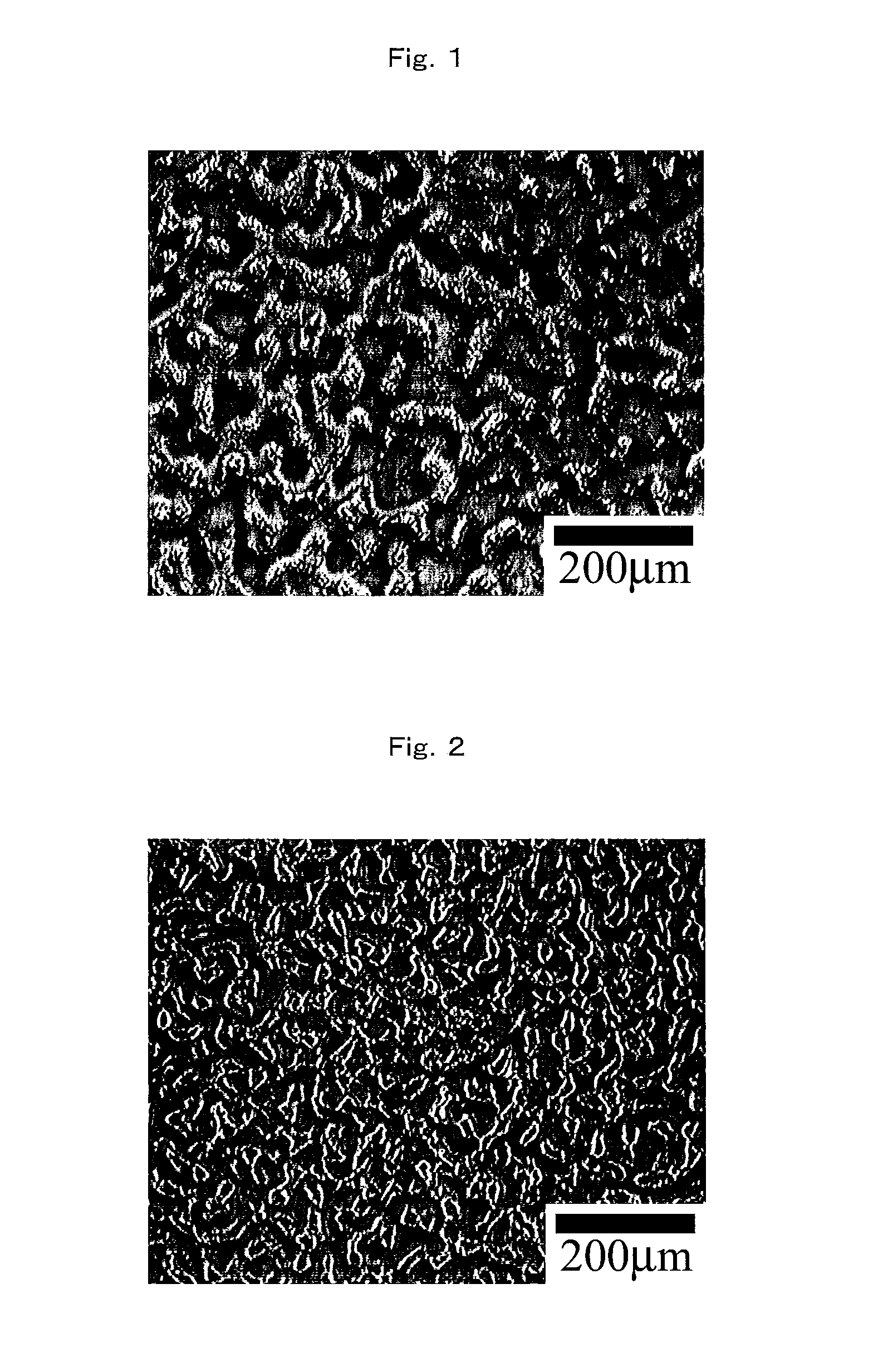Optical film and process for producing the same
a technology of optical film and slits, applied in the field of optical film, can solve the problems of easy cracking of anti-glare sheets, so as to improve abrasion resistance and mechanical properties, improve the effect of anti-glare or anti-newton rings, and moderate flexibility
- Summary
- Abstract
- Description
- Claims
- Application Information
AI Technical Summary
Benefits of technology
Problems solved by technology
Method used
Image
Examples
example 1
[0167]As a transparent film, a cellulose triacetate film (manufactured by Fujifilm Corporation, TAC, thickness: 80 μm) was used. The coating composition HC-1 for hardcoat layer was applied on the film with the use of a bar coater #30 and then dried at 70° C. for one minute. The coated film passed through an ultraviolet irradiation equipment (manufactured by Ushio Inc., a high-pressure mercury lamp, dose of ultraviolet ray; 800 mJ / cm2) for ultraviolet curing treatment to form a hardcoat layer having a hardcoat property and an uneven surface structure. The thickness of the hardcoat layer in the resulting optical film was about 10 μm. The observation of the surface of the resulting optical film by a laser-microscopic photograph is shown in FIG. 1.
example 2
[0168]An optical film was produced in the same manner as in Example 1 except that the coating composition HC-2 for hardcoat layer was used instead of the coating composition HC-1 for hardcoat layer.
example 3
[0169]An optical film was produced in the same manner as in Example 1 except that the coating composition HC-3 for hardcoat layer was used instead of the coating composition HC-1 for hardcoat layer.
PUM
| Property | Measurement | Unit |
|---|---|---|
| average primary particle size | aaaaa | aaaaa |
| Ra | aaaaa | aaaaa |
| Ra | aaaaa | aaaaa |
Abstract
Description
Claims
Application Information
 Login to View More
Login to View More - R&D
- Intellectual Property
- Life Sciences
- Materials
- Tech Scout
- Unparalleled Data Quality
- Higher Quality Content
- 60% Fewer Hallucinations
Browse by: Latest US Patents, China's latest patents, Technical Efficacy Thesaurus, Application Domain, Technology Topic, Popular Technical Reports.
© 2025 PatSnap. All rights reserved.Legal|Privacy policy|Modern Slavery Act Transparency Statement|Sitemap|About US| Contact US: help@patsnap.com

